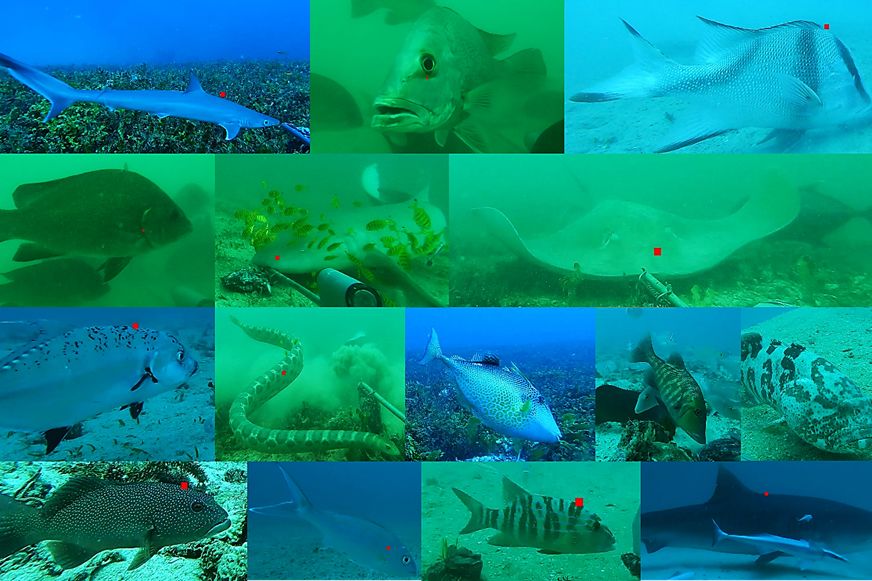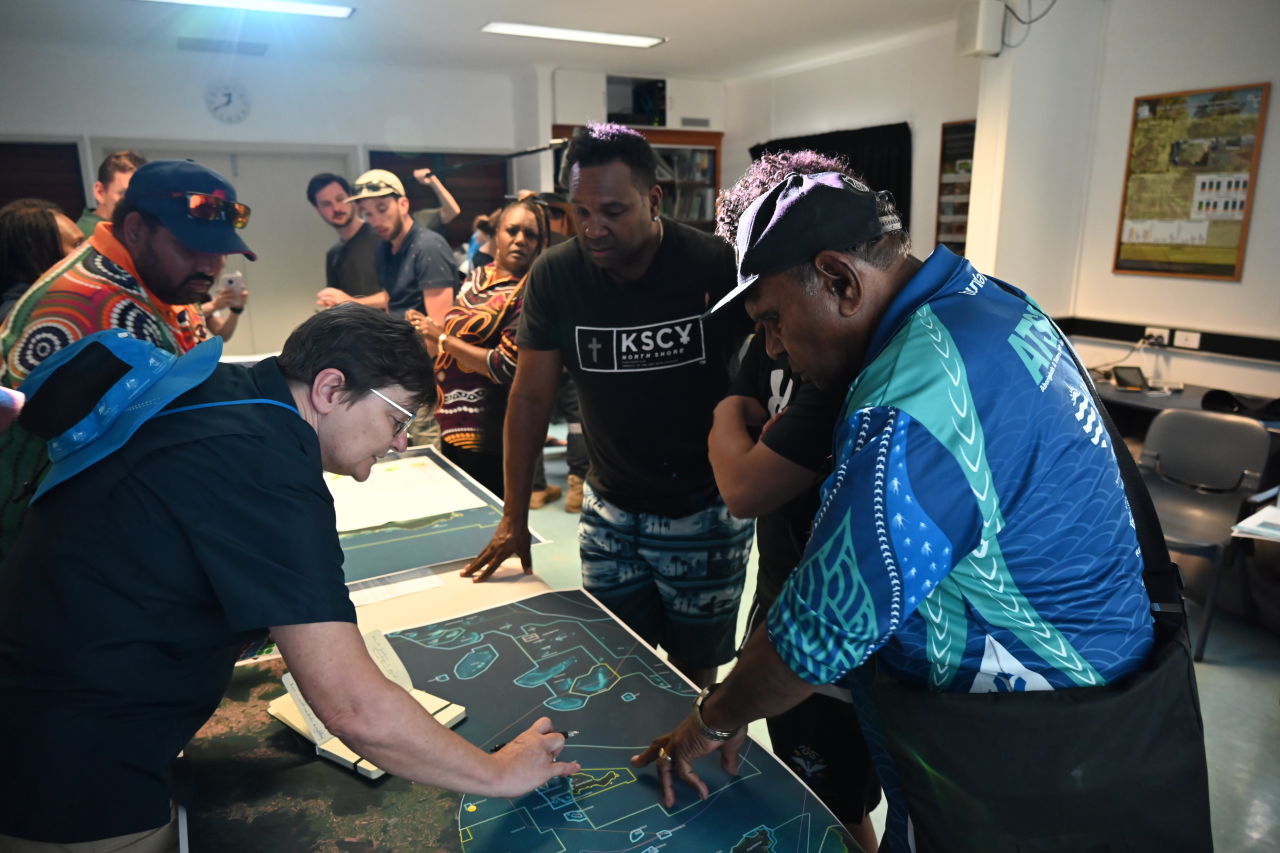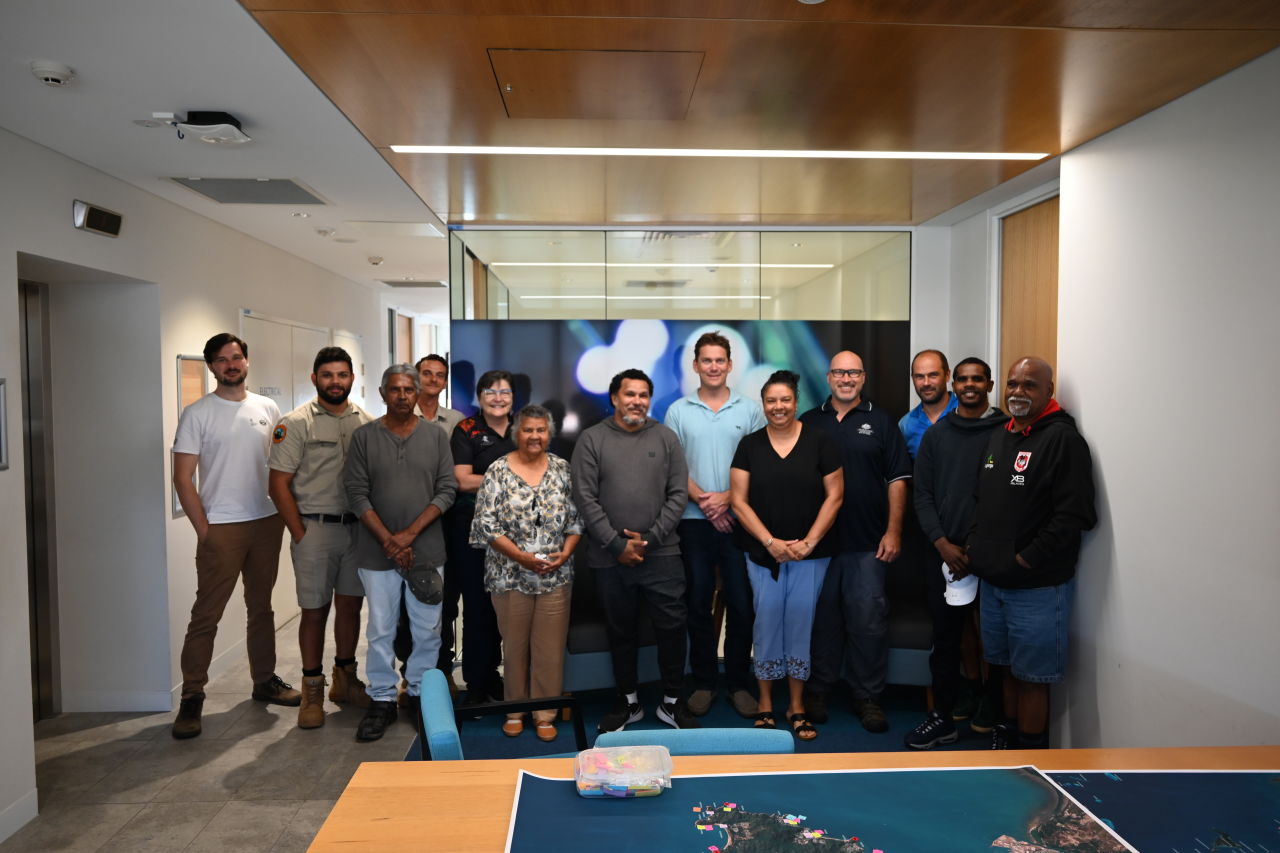Why monitor reef fish? We’re glad you asked!
Reef fish are vital to the health of coral reefs. Over 1,500 fish species call the Great Barrier Reef home, and their lives are intricately intertwined with the rest of their reef ecosystems. From the charismatic Napoleon wrasse to the tiny clownfish, these species are as varied as they are beautiful, and they perform critical ecological functions. Our reefs would be lost without them, so it is crucial to keep tracking and learning as much as we can about these important marine dwellers.
Monitoring reef fish supports reef management and helps scientists understand how a wide range of factors may impact reef fish populations and how these affect critical functions that reef fishes perform.
The Australian Institute of Marine Science (AIMS) has been monitoring fish populations on the Great Barrier Reef for over three decades, using underwater visual survey techniques by expert scientists.
Through their research, they have made important discoveries about fish populations across the Reef, and have uncovered how large disturbances, such as coral bleaching, crown-of-thorns starfish outbreaks, and cyclones affect and compromise the health of those fish populations.

Baited Remote Underwater Cameras capture snapshots of an array of fish species. Credit: AIMS
As part of the Reef Trust Partnership’s Integrated Monitoring and Reporting program, the Foundation funded AIMS along with collaborators from University of the Sunshine Coast and TropWATER at James Cook University, to monitor reef fish populations across the Reef. This project is helping fill critical knowledge gaps around fish species of recreational, commercial, cultural and ecological significance. These include investigating juvenile fish populations found in nursery seascapes close to the coast, species inhabiting fringing reefs around coastal islands, and fish that live in deeper waters between reefs.
What makes this project so unique and impactful has been the co-development of the nursery seascape component with Traditional Owners from Djiru, Gulngay, Girramay, Bandjin, Warrgamay and Nywaigi, engaged through the Girringun Aboriginal Corporation, along with Manbarra, and Wulgurukaba Traditional Owners, encouraging trusted knowledge exchange. The project achieved this through adoption of the AIMS Indigenous Partnerships Program framework.
The Traditional Owners of the Reef have been custodians of their Sea Country for millennia, carrying out their inherent rights and responsibilities to care for Country. As knowledge has been passed down from generation to generation, today’s First Nations Peoples of the Reef hold an immense accumulated wisdom, which the IMR project has had the opportunity to learn from.
“AIMS came to the [Manbarra] Elders’ council with an idea about fish monitoring. It just made sense that we had common values about caring for Country, how we might do that and how we might collaborate,” said Richard Cassady, a Mingga Mingga Ranger Co-Ordinator and Manbarra Traditional Owner.

Manbarra Traditional Owners share their knowledge to help map monitoring sites. Credit: AIMS
During the design phase, researchers from the project team met on Country with Traditional Owners, elders and rangers from Manbarra, Wulgurukaba and the people represented by the Girringun Aboriginal Corporation to share knowledge, provide training in monitoring techniques and co-design the sampling design for the Nursery Seascape component of the project.
Traditional Owners shared stories from their collective memories, which allowed the researchers to uncover more information on what fish populations used to be like on their Sea Country in decades past. This helped paint a picture of how things have changed over time, with increased visitation, fishing pressures and environmental stressors on Sea Country. Together they created elaborate maps that brought together a vast wealth of data that helped identify the best monitoring sites and refined the sampling design.
As Libby Evans-Illidge, Manager of AIMS Indigenous Partnership Program, shared after one of their workshops: “It’s a fantastic result – look at this beautiful map. It’s not just a combination of our current state of knowledge, it’s the best possible design for this project. We learnt a lot about how the environment has changed through time. We’ve also learnt about some really sensitive story places that we’re very fortunate that we are allowed to still consider doing study in that area, but of course with the sensitivity of knowing to treat those places very carefully and make sure that we notify Elders before we go into those places.”

Team photo after a successful planning workshop. Credit: AIMS
These efforts are an important part of Reconciliation Action, as Traditional Owners have historically not been informed, consulted or included in research on their sea Country. The project team was proud to be able to build a relationship with Traditional Owners and to work collaboratively.
“We have been working in their Sea Country not only without their permission, but without their knowledge. We’ve gathered all this information that could be of use to them, that we’re not giving to them. We want to do better, and this is part of learning to do better and be more, not just inclusive, but have them guide us. It is also the start of the Ranger program for them. This project is what will kick start that ranger program,” said Dani Ceccarelli, Reef Fish Ecologist at AIMS.
AIMS and their partners have also provided hands-on training to Traditional Owner Sea Rangers, which has built capacity with the aim of enabling Traditional Owners to monitor and care for their sea Country in the future. Rangers have been provided with training in the maintenance and deployment of camera systems to document and quantify fish and benthic communities on Country. This will culminate in a workshop in May 2024 to accredit Rangers in competencies that can contribute to a Certificate III in Marine Habitat Conservation and Restoration.
The project has been an overwhelming success for all those involved and proves that co-design and collaboration with Traditional Owners is not only invaluable from a social and cultural perspective, but highly effective for the best research outcomes.
Richard Cassady, a Mingga Mingga Ranger Co-Ordinator and Manbarra Traditional Owner said: “There is a great unknown about the health of our sea Country. With this program, there is the potential that we can have a solution. We have a story on Manbarra Country. One of the principals of this story, the solution was found in Country. What’s in Country is people with knowledge who might provide us with the necessary information, the ability to navigate this space with a better understanding. The blessing that we find is that organisations like AIMS, like JCU Research Centre, have put up their hands and said ‘Hey, can we be on the journey with you’ and that for me is a beautiful thing.”
WARNING: Aboriginal and Torrest Strait Islander Viewers are warned that the following video contains images and voices of deceased persons.








